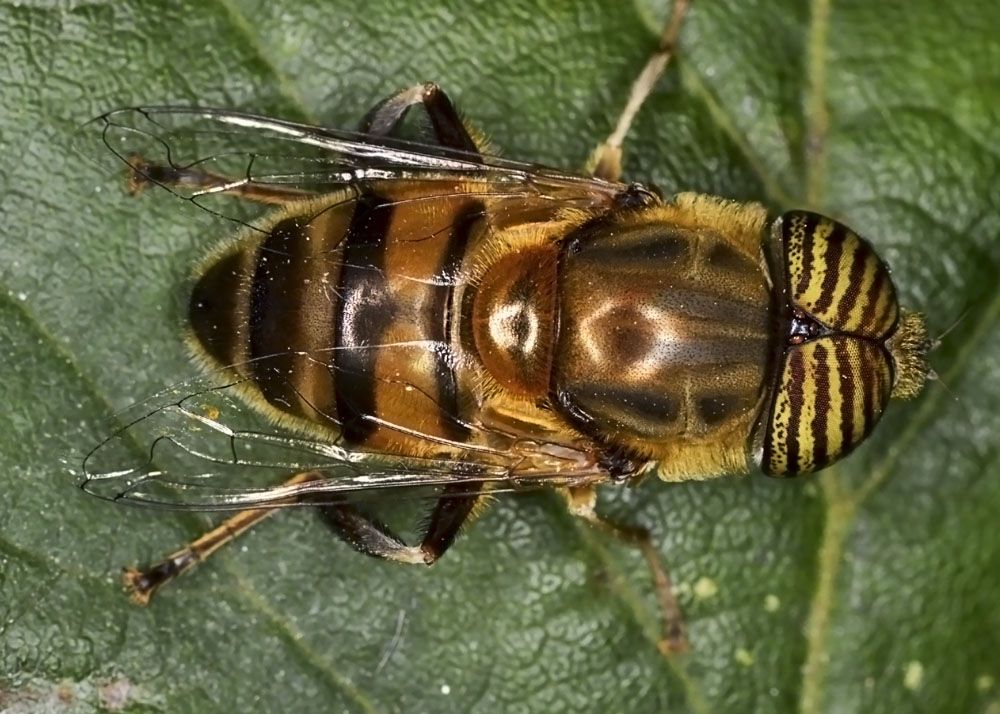
Drone Flies – Rattatailed Maggot – Eristalis spp.
Drone Flies
Genus: Eristalis
Common Name: Drone flies, Rat-tailed maggots
Appearance: Some of its species, for example, E. tenax resemble honey bees, so they are called Drone flies, and their maggots (Larvae of flies) have a rat-like back tail that helps them breathe in the water, so are called rat-tailed maggots. As far as appearance is concerned, they have a hairy dark brown body with dull orange patches and a head wider than thorax with attached antennae. They have single pair of wings with a spurious vein.
Host Plants or Food: Adults feed on pollen and nectar while larvae live in muddy water, so they feed on small insects and dead decaying organic matter.
Territory: North America, Western America, Southeastern America, Europe, Australia.
Mode of Damage: Beneficial Garden Insect
Habits and Life History:
- Drone flies are widespread, mostly found in fields, grasslands, gardens, farmlands, freshwater, coastal, and the places with flowers.
- Male Drone flies are highly territorial, they guard their territory in summers to find a chance to mate, and if some other insects enter into it, they chase them down until it goes out.
- Female lays eggs on the surface water or any decaying organic matter. Eggs are white and covered with some sticky material.
- Larvae live in eutrophic water (the water with high organic matter). They are cylindrical and have a segmented body.
- Now it’s time for pupation, and larva leaves the aquatic environment and migrate to drier places below the soil surface. Pupation occurs, and pupa remains there in soil for 8-10 days.
- Pupae develop into adults, which feed on pollen and nectar, and get the nutrients.
